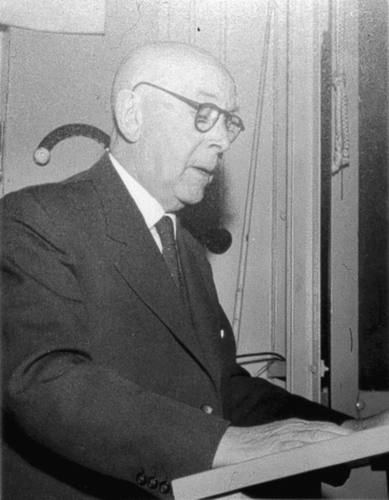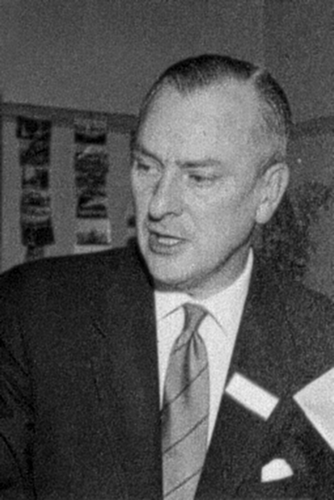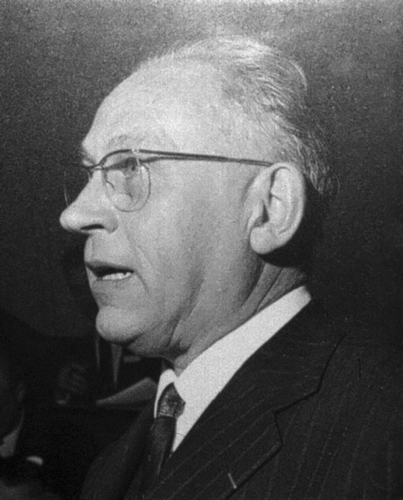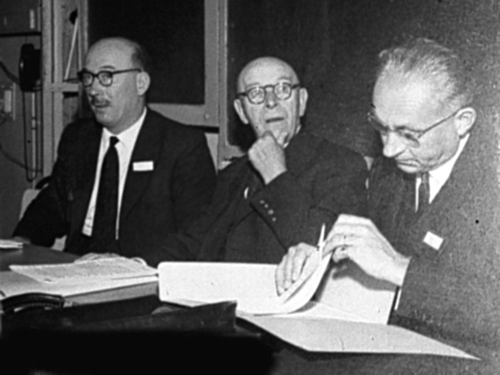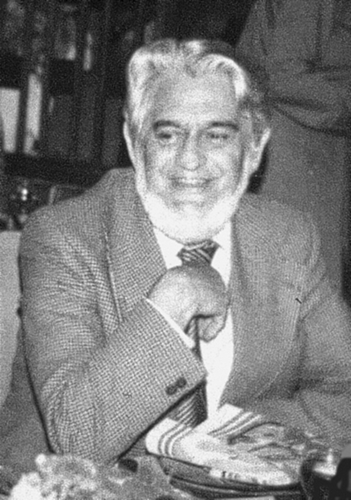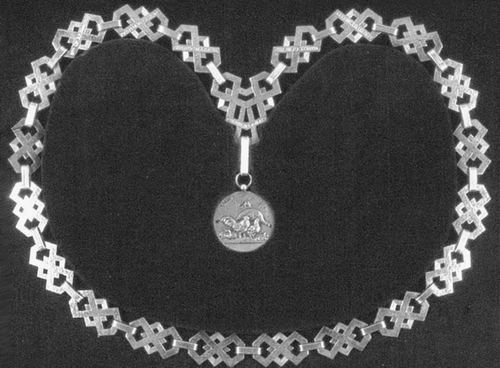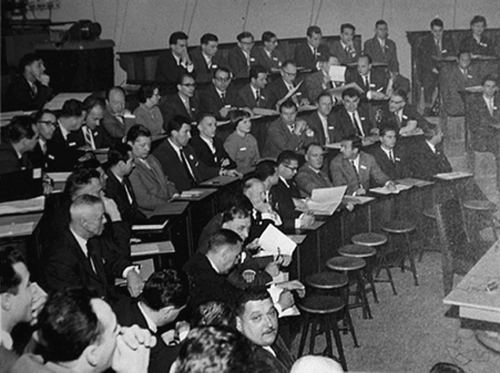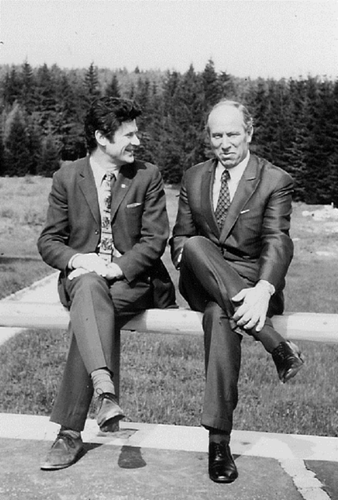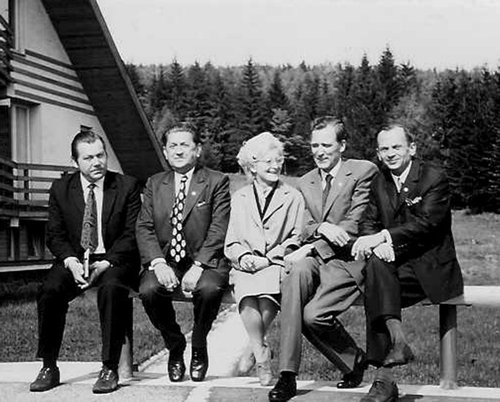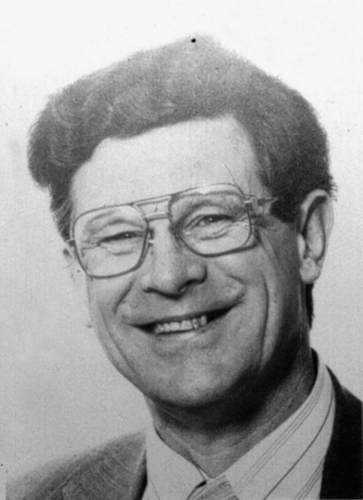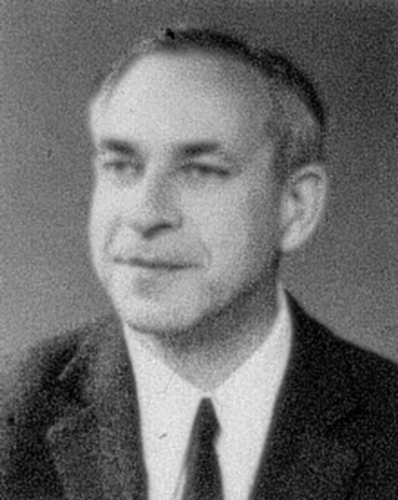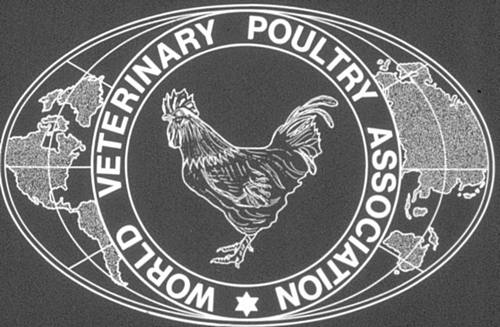Abstract
The World Veterinary Poultry Association (WVPA) was formed in 1959, the honour of being the first President of the Association going to Professor de Blieck and that of Secretary to Dr R.F. Gordon, who had both championed its formation. The First WVPA Conference (the name “Congress” was not applied until the third meeting) took place in Utrecht in 1960. The second Conference (1962) and the third Congress (1965) were in Cambridge and Paris, respectively. The fourth Congress, in Belgrade (1969), was a landmark one for two reasons: firstly, submitted papers were introduced, and secondly, the notion of a WVPA journal, later to be called Avian Pathology, was first discussed. A year later (1970) the journal came into being, Professor Klimeš (Czhechoslovakia), the driving force behind its creation, being the first Editor-in-Chief, with Professor Kosic (Yugoslavia) as production Editor. Due to the ill health of Professor Klimeš, Peter Biggs was confirmed as Editor-in-Chief in 1973. A charitable company, Avian Pathology Ltd, was formed in 1980, under which Avian Pathology was published. Dr L.N. (Jim) Payne succeeded Dr Biggs as Editor-in-Chief in 1988. The fifth and six Congresses were in Munich (1973) and Atlanta, Georgia, USA (1977), respectively. Four years later, at the Oslo Congress, it was agreed that the rather crude logo adopted at the fourth Congress should improved. This was done and is the current logo. On the 25th anniversary (1985) of the first WVPA Congress, the eighth Congress was held in Jerusalem. Membership had increased to almost 1000, with members in 39 countries, 22 of which had branches of WVPA. In 4 years it will be time to publish an account of the second 25 years in the history of the WVPA.
The formation of the World Veterinary Poultry Association
It all began in May 1955 at the International Veterinary Congress in Paris when the Bureau of the Permanent Committee of the International Veterinary Congresses (IVC)—later to become the World Veterinary Association (WVA)—accepted an amendment to its Statutes to allow the affiliation of international associations of veterinary specialists. A number of such international associations already existed or were in the process of being formed, including the International Association of Veterinary Pathologists, the International Association of Veterinary Parasitologists, the International Veterinary Federation of Zootechnics and the International Association of Veterinary Food Hygiene, but no international species association was in existence. Soon after this, in the summer of 1955, Professor de Blieck (1878 to 1965) () of the Netherlands wrote to Dr R.F. Gordon (Director of Houghton Poultry Research Station, UK) (), pointing out the amendment and that it was hoped to form an International Association of Veterinary Poultry Pathologists and that he had been appointed Provisional President. He was writing to Dr Gordon to invite him to accept the post of Provisional Secretary. Dr Gordon accepted and immediately became very busy attempting to recruit supporters for the venture. As a result of discussions and correspondence with Professor de Blieck and Dr Jansen, the General Secretary of the IVC, he prepared letters to all members of the Permanent Committee of the IVC and to veterinary organizations in member countries of the IVC. This was not very successful, largely because there was little interest in poultry pathology among the members of the Permanent Committee and difficulty had been experienced in contacting some European countries.
It was felt that more rapid progress could be made if national associations could be set up in countries with organized poultry industries that then could become affiliated to and form the international association. National associations of poultry pathologists already existed in the Netherlands and two such associations had been established for some time in the USA, the Northeastern Pullorum Conference and the Northcentral Pullorum Conference (The American Association of Avian Pathologists (AAAP) was not formed until 1957). At that time there was no national association in the United Kingdom, but Dr Gordon believed that if one could be formed then the four national associations could form the basis of an international association and that correspondence and discussions through the Officers of these already established associations would facilitate progress
In January 1956, Dr Gordon wrote a letter to the Veterinary Record (Gordon, Citation1956) outlining the case for an international association and outlining the main principles that would govern affiliation to the Permanent committee of the International Congresses. He proposed a meeting, which took place in March that year in London, to inaugurate a National Association of Poultry Pathology and to discuss the formation of an international association. This meeting took place on 6 March 1956, resulting in an inaugural meeting of The British Veterinary Poultry Association in May that expressed support for the establishment of an international association. In the meantime Dr Gordon had been in correspondence with Dr Jungherr and Dr Van Roekel (two distinguished American veterinary poultry scientists), who replied saying they would fully support the formation of an International Association of Poultry Pathologists within the framework of the International Veterinary Congresses and that they would discuss the matter at the next meeting of the Northeastern Pullorum Conference and would contact the Northcentral Pullorum Conference, the Chairman of the Pathology Section of Poultry Science and the American Veterinary Medical Association (AVMA). They felt these bodies would all support the proposition.
At the 16th International Veterinary Congress held in May 1959 in Madrid, the amendment to allow the affiliation of international associations of veterinary specialists was confirmed by the Bureau and came into force. At this Congress an exploratory meeting was held to consider the formation of what was now to be called the World Veterinary Poultry Association (WVPA). Dr Gordon told the meeting that national veterinary poultry associations were in being in Great Britain, the Netherlands, America and Japan that all supported the formation of a world association. Professor Brion (France) () informed the meeting that a national group had been formed in France and all 900 (sic) members were in favour of joining a world association! Representatives from other countries also supported this action. “The meeting by acclaim, adopted the resolution proposed by Dr. Gordon and seconded by Dr. McKay, that a World's Veterinary Poultry Association (WVPA) be formed. It was the proposed by Dr. McKay and seconded by acclaim that Professor de Blieck be the first President of the Association.” Draft Model Statutes were provided by the Permanent Committee of the IVC for consideration and were adopted by the Exploratory Meeting. Other officers outlined in the Draft Statutes appointed were: two Vice Presidents, Professor A. Brion (France) and Dr P. Levine (USA); Secretary, Dr R.F. Gordon (Great Britain); and Assistant Secretary and Treasurer, Dr W.M. McKay (Great Britain) ( and Table ).
Table 1. Interim Officers of the WVPA, 1959
These individuals were key to the formation and early development of the WVPA. Professor de Blieck was an obvious choice as the first President because not only was he highly respected, but he was the initiator of the movement to form the WVPA. He was the grand old man of poultry pathology, being 81 at the time of being elected the first President of the Association. Professor Brion held a senior academic post in France and was a great supporter of an international association. He spoke English well and such beautiful French that even I could understand. He also was very kind and gave support to those of us who were at the time entering the field. The latter can also be said of Dr Levine, who was Chairman of one of the best known poultry disease departments in the world at Cornell University. He was a distinguished scientist and a great internationalist and was instrumental in gaining support for the Association in the USA. Dr Gordon was a well known poultry pathologist and is distinguished for developing Houghton Poultry Research Station into an internationally respected institute for which he was its first Director. He was my boss for 15 years, and from personal experience I can say that he also encouraged the young and those entering the field and gave them support. Finally, Dr McKay was a veterinarian employed in the pharmaceutical industry and was instrumental in gaining the support of that industry for this venture. What one can say about all these veterinarians is that they were passionate in forming and developing an international association of poultry disease scientists. Sadly, they all are no longer with us.
There were two meetings of the Bureau before the first General Meeting of the Association, which was held during the first Congress in Utrecht, The Netherlands, in November 1960. The first of these two meetings was held in Paris in May 1960, for which Dr Gordon and Dr Levine gave their apologies, and was attended by Dr Jansen. The main business of the meeting was to hear a report from Dr McKay on the progress in the formation of the Association, to formulate an Agenda for the General Meeting to be held in Utrecht and to discuss the arrangements for the first Conference in Utrecht. Twelve countries had given figures of their probable membership and a further eight had appointed corresponding secretaries. To review and approve the new Model Statutes, to consider recommendations for office bearers and to consider the amount of individual membership fee were agreed items for the Agenda of the first General Meeting. It was reported that the first Conference which was to be held in Utrecht later in the year, was being organized by a local Netherlands Committee although the subjects and speakers were chosen by the Bureau. It was agreed that the Conference Fee would 10 ten shillings sterling and that there would be no social functions. The second meeting took place a month later at Houghton Poultry Research Station, England and was attended by the President, Professor de Blieck, the Secretary, Dr Gordon, and the Assistant Secretary/Treasurer, Dr MacKay. The amended Model Statutes were agreed and would be put before the General Meeting for ratification. Concern was expressed that out of 500 people circulated about the Association only 23 had become members by paying the subscription of 10 shillings. Dr Gordon reported that all but one of the proposed speakers had accepted and that he had had a letter from Professor Bankowski saying he intended to be present at the Congress and it was agreed that he should be invited to speak to fill the one vacant spot. Finally a report was read from Professor Hoekstra () of the Organizing Committee (a co-organizer was Dr Zuijdam, who kindly provided most of the photographs used in this paper; ), and concern was expressed over the lack of support. Only 17 people had informed the Treasurer of their intention to attend. There was clearly serious concern over the viability of the Congress and procedures were put in place to raise funds. These were successful because the first Conference duly took place in November 1960. However, there were insufficient funds for the provision of simultaneous translation. Where called for, members of the Association volunteered to provide translations into French and German.
Figure 6. Dr D.M. Zuijdam, member of the Organizing Committee of the first Congress, and Dr Stableforth, Director of the Central Veterinary Laboratory, Weybridge, England.
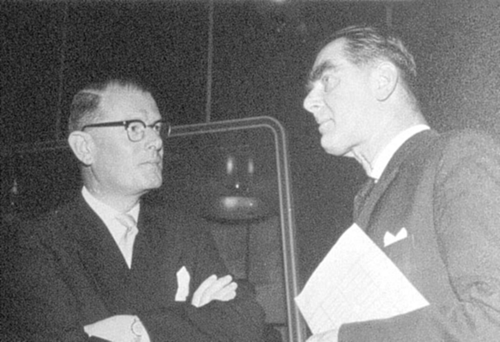
Statutes
At this point it would be worthwhile to record briefly the history of the Association's Statutes. As already mentioned, the Permanent Committee of the IVC had provided recommended Draft Model Statutes. These were adopted by the exploratory meeting held in Madrid in 1959. At the second meeting of the WVPA Bureau held in June 1960 a number of amendments to the Model Statutes were agreed, and at the fist General Meeting of the Association held during the first Conference in Utrecht in 1960 the amended model Statutes were unanimously accepted and it was announced that affiliation to the WVA had been accepted. Over the years numbers of amendments were made to the Statutes, and at the Bureau meeting held during the WVA Congress in Moscow in 1979 many further amendments were proposed, which was now leading to confusion. Dr L.N. (Jim) Payne suggested that it would help if the Statutes were rewritten, and he very kindly agreed to do this. After consulting Bureau members he would present the rewritten Statutes to the Bureau and General Meeting to be held in Oslo in 1981, at which meeting the new Constitution and Rules were approved.
First Conference
The first Conference was attended by 160 members from 20 countries and 11 papers were presented. The General Meeting was split into two sessions, part at the beginning of the Conference and continued at the end. It was presided over by the President, Professor de Blieck, and for his Presidential address he presented an historical survey of the formation of the WVPA and it aims and objects. The Meeting heard from the Secretary that 800 veterinarians from 24 countries had indicated their intention of joining the Association and that there were now national associations in the USA, the United Kingdom, the Netherlands, France, Western Germany and Japan. He also announced that the Association's application for affiliation to what by now was called the WVA had been accepted. The treasurer pointed out that the financial position was satisfactory, which was largely due to donations from pharmaceutical and feed compounding firms in the United Kingdom. The statutes that had been previously circulated and had been accepted by the WVA were adopted unanimously. The Meeting was resumed at the end of the Conference and was preceded by a brief ceremony when Dr Blount, veterinary advisor to the feed compounder British Oil and Cake Mills, presented to Professor de Blieck, in the name of the British Veterinary Poultry Association, a President's chain of Office that was a gift from his organization ( and ). Because the current officers were provisional and not elected at a General Meeting, there was need to elect officers for a 4-year period. Professor de Blieck was elected Honorary Life President by acclaim as a tribute to his work in the inauguration of the Association. Dr Brion was elected President and Dr Gordon and Professor Levine elected Vice Presidents. Dr McKay was elected Secretary/Treasurer and Professor Fritzsche (West Germany) elected Assistant Secretary Treasurer (Table ).
Table 2. Officers elected at the General Meeting of WVPA held in Utrecht in 1960
This Conference was historic for two reasons. Firstly, it legitimized the creation of the WVPA; and secondly, it introduced the name Marek's disease. Two papers were presented on the Classification of the Avian Leukosis Complex and fowl paralysis—one by Dr J.G. Campbell and the other by Dr P.M. Biggs, who suggested that the term Marek's disease be used to describe fowl paralysis and its associated tumours. The Conference was unique in that four resolutions were put before the General Meeting. They were all accepted, and the first resolution was a recommendation for the classification of avian leucosis and fowl paralysis, which separated the leukoses and fowl paralysis and recommended the term Marek's disease for the latter, which went as follows:
“We, the first conference of the World Veterinary Poultry Association, recommend that the following classification of the leucosis complex and fowl paralysis be adopted by veterinary research workers in order to clarify the nomenclature in the world literature:”
The second resolution concerned Newcastle disease and infectious bronchitis:
“In extensive poultry-keeping districts, Newcastle disease should be eradicated by a slaughter policy and legislation, but where intensive management is employed, it will be necessary to use flock immunity methods.
Infectious bronchitis should be controlled by vaccination using live virus vaccine, the strain characteristic of the vaccine virus to be agreed on a regional basis.”
The third resolution was about mycoplasmosis:
“That the term “Nelson's mycoplasmosis” be adopted to cover diseases heretofore referred to as C.R.D. in chickens and infectious sinusitis in turkeys which are caused by Mycoplasma gallisepticum.”
The final resolution dealt with avian encephalomyelitis:
“As the modes of transmission of avian encephalomyelitis are not yet perfectly clear, and as it is impossible, in the present state of our knowledge, to detect virus carriers, no vaccination programme can be proposed. Further studies are necessary for a precise epidemiology.”
I have included these resolutions because of their interest in relation to the subsequent development of knowledge and procedures for the control of these diseases.
illustrates the room used for the first conference and includes most of those who attended the Conference. I remember this room and the Conference vividly because at the end of my talk on the classification of the avian leucosis complex, when I asked for my last slide, which was the culmination of my talk presenting a suggested new classification, I was told there were no more slides! After some discussion with the projectionist to no avail I was forced to explain my classification without illustrative support. After my talk I went to collect my slides only to find the last slide in the projector!
It is interesting to note that at the next meeting of the Bureau, which took place in Paris in May 1961, there was a discussion on the first Conference that considered that the arrangements had been satisfactory but for the absence of simultaneous translation. The conclusion of this discussion was that it was an expensive item and it was agreed that the Association should have one official language, English, and that this should be added to the Statutes of the Association. However, I cannot find any record of this occurring. Also of historical interest was a discussion on the publication of the conference proceedings. Dr Gordon outlined the arrangements for the conference papers to be published by the British Veterinary Journal. He also reported that he had a letter a few days ago from Avian Diseases offering their services as the official journal of the Association. The view was put forward that Avian Diseases would be more suitable because the British Veterinary Journal was a general veterinary journal and it was pointed out that it would appeal more to Americans and make the Association less European in character. However, as arrangements had been proceeding with the British Veterinary Journal it was agreed to accept their offer for this occasion. The proceedings of the first Conference were duly published in the British Veterinary Journal (Citation1961). The proceedings were preceded by an Editorial, from which comes the following extract:
“There has been a tendency to belittle the efforts of the veterinary profession in the control of avian diseases. Although this may be true as far as direct contact between the veterinary practitioner and the poultry farmer is concerned, it is equally true that the poultry industry could not have expandded as it has done, to become one of the major branches of agriculture in most countries, without the efforts of the relatively few avian pathologists, diagnosticians, and veterinary field officers. The successful formation of the World Veterinary Poultry Association as an affiliated branch of the World Veterinary Association is a gratifying indication of our profession's increasing interest in this highly important field of food production.”
Second Conference
The second Conference was held in Cambridge in September 1962 and was attended by about 200 delegates from 18 countries. Eight papers were presented and in addition a symposium on “Disease control in different countries” was held. Honorary translators were appointed from the delegates. The WVPA held its first banquet in the glorious surroundings of King's College, which was preceded by a reception at which all delegates were received by the President Professor Brion. This established a tradition of banquets at congresses. At the Bureau meeting held at the Conference, the Treasurer reported that the Association funds stood at £2358. It was agreed to accept the offer from the British Veterinary Journal to publish the proceedings of the Conference (British Veterinary Journal, Citation1963). It was reported that 35 papers had been submitted for the 13th WVA Congress to be held in Hanover in 1963, which was the first occasion when the Association had been responsible for the programme of the Poultry Section of a WVA Congress.
The Second General Meeting of the WVPA was held during the WVA Congress in Hanover in 1963, when the entire Bureau resigned and was re-elected. From two invitations to host the next conference, one from the AAAP [AQ1] and the other from the French Association, it was agreed by a large majority that the next conference be held in Paris in 1965, indicating the strong European influence within the Association in its early days.
Third Congress
The third Congress (note the change from conference to congress) was held in Paris in September 1965, during which 25 papers were presented in four sessions: 1, economic losses due to poultry disease and the role of the veterinary profession in its control; 2, transmissible avian tumours; 3, nervous diseases of poultry; and 4, infectious bronchitis. Simultaneous translation was provided at a cost of 7000 New Francs. The attendance was over 300 from 25 countries. A reception given by the President, Professor Brion, during an evening cruise on the Seine was followed by a banquet in the Palais d'Orsay. Tours were arranged and there was a ladies programme. At the Bureau Meeting it was announced that the Association's funds now stood at £1373 and it was agreed to offer £200 to the WVA Congress to be held in Paris in 1967 because of the shortage of WVA funds. Subjects and speakers were agreed for submission for the 14th WVA congress in Paris. It was agreed that the Bureau should be enlarged by at least two members because of the increasing numbers of member countries. For this the Statutes would need altering, and it was agreed that a resolution would be drawn up and sent to Dr Janssen for the approval of the WVA. Condolences were sent to Madame de Blieck on the occasion of her husband's death. Professor de Blieck had been instrumental in the establishment of the Association.
A general Meeting was held during the WVA congress in Paris in 1967 at which the election of Officers took place as follows: President, Dr Gordon (UK); Vice Presidents, Dr Mckay (UK) and Dr Fritzsche (West Germany); Secretary Treasurer, Dr Garside (UK). In addition, eight members were elected to the Bureau.
Fourth Congress
The fourth Congress was held in Belgrade in September 1969, at which there were 600 attendees from 31 countries and 109 papers were presented in eight sessions. There was a change of policy from all papers being given by invitation to the inclusion of submitted papers. Holding the Congress in Yugoslavia facilitated attendees from Eastern-block countries. Apart from the success of the sessions the General Meeting is memorable for the initiation of what is likely to have been the most important activity of the Association since its formation. The Meeting first went through the usual business. It was told that membership was now 445 with branches and members in 15 countries and that the funds stood at £1200. The subjects for the poultry section of the WVA Congress to be held in Mexico City in 1971 were agreed, and Munich was announced as the venue for the Vth WVPA Congress in 1973, thus establishing a cycle of activity that was maintained until 2001. This cycle contained a congress every 4 years and the Poultry Section of the WVA congress held between WVPA Congresses. Bureau meetings were held at each of the events and a General Meeting at the WVPA Congresses. When it came to the election of officers, Dr Gordon announced that he did not wish to stand for re-election. Dr Levine (USA) was elected President, and in his absence Dr Gordon handed over the chain of office to Dr Calnek who was representing Dr Levine. Dr Gordon was elected by acclaim as an Honorary Life President in recognition of all he had done to help found the Association. Dr McKay and Professor Kosic were elected as Vice Presidents. Although Dr Garside had expressed a wish to relinquish the office of Secretary/Treasurer he was prevailed upon to accept re-nomination for the time being. In addition to the existing members of the Bureau, four new Bureau members were agreed.
Avian Pathology
At the end of the meeting, Professor Klimeš (Czhechoslovakia, Head of the Poultry Department and later Dean of the Veterinary Faculty in the School of Agriculture, Brno) proposed that a working party be formed to examine the possibility of establishing a European journal of avian diseases. He stated that he and Professor Kosic were willing to be members and he would like to receive nominations of others who would be interested to join them. There was considerable discussion on this proposition but not much enthusiasm. Even so it was agreed that the possibilities be explored of launching a WVPA journal. This was to start a ball rolling that would end up with the WVPA having a journal that was truly international. If it had not been for the drive and belief in the project by Professor Klimeš it would have been unlikely to have come to fruition.
Professor Klimeš and Professor Kosic made enquiries of the membership and favourable opinions were received. The matter was again discussed at a meeting of a number of Bureau members at the World's Poultry Science Association Congress in Madrid in September 1970. A summary of their views was sent by Klimeš to Dr Garside, Secretary/Treasurer of the WVPA, who then circulated the proposals to all members of the Bureau for their comments. On the basis of these, Dr Garside sent to the Bureau members a firm set of proposal that, if agreed, would set in train the creation of a WVPA international journal, which was to be named Avian Pathology. The Bureau did agree and, at its meeting held in Mexico City in 1971 during the WVA Congress, Professor Klimeš was appointed Editor-in-Chief (), Professor Kosic appointed production Editor (), who guaranteed finance for the first year of four issues, and an Editorial Board consisting of Dr Levine, Professor Brion, Professor Gylstorff, Professor Petek and Dr Biggs was agreed. Dr Biggs (), who had now become Secretary of WVPA, was asked to arrange a meeting of editors in Belgrade. The meeting in Belgrade took place at the end of 1971 under the Chairmanship of Dr Levine. His experience in establishing Avian Diseases and his wisdom was invaluable. Editorial procedures were agreed and the journal format was discussed. Plans were made to publish the first number in the autumn of 1972. This publication date was achieved and the number formed volume one. Volume two consisted of four numbers, as did subsequent volumes for many years. Unfortunately, due to ill health, Professor Klimeš was unable to continue with the editorship and I took over the duties of Editor-in-Chief temporarily. At the Bureau meeting held in Munich in 1973 I was confirmed as Editor-in-Chief and Dr L.N. Payne (UK) was appointed Assistant Editor-in-Chief. This team continued to edit Avian Pathology until 1987 when I decided to step down and was replaced in 1988 by Dr Payne who was joined by Dr B.M. Freeman (UK) as an editor.
Professor Kosic as Production Editor, ably assisted by Mrs J. Rodic, successfully produced the journal but not without considerable effort and time. Experience had shown that it was difficult and impracticable having the Production and Editorial Offices in different countries. It was agreed that the production should be moved to England. After much searching a suitably experienced small printer, E and E Plumridge Ltd, was found in England and the publishing of the journal was moved to England in 1974. Publication commenced in the United Kingdom with volume 4 in 1975. In order to financially protect the editors and bureau members and to remove liability to tax a charitable limited company, Avian Pathology Ltd, was formed in 1980 under which Avian Pathology was published. This had been agreed by the Bureau at their meeting in Atlanta in 1977. As the journal and later the Company had only small financial reserves, it was decided that it was necessary to build the reserves to a sum adequate to cover the costs of one year's publication.
This arrangement continued until 1991 when, with the Bureau's agreement, publication was put in the hands of a professional publishing house, Carfax, who from 1991 have produced the journal on behalf of the WVPA. This enabled an annual sum of money, derived from investments of the company (£50, 000 at that time) and royalties from the publishers, to be used on a scheme to support young researchers throughout the world to make short training visits to laboratories and to attend appropriate scientific meetings and to support a lecture at WVPA congresses. The first grants were made in 1992 and the first Houghton Lecture was presented at the WVPA Congress in Sydney in 1993. In the meantime, the company's name was change to The Houghton Trust Ltd in 1992. In 1997 Dr Payne stepped down as Editor-in-Chief, and since then it has been in the capable hands of Dr Dave Cavanagh (UK).
Fifth Congress
Apart from giving the go ahead for Avian Pathology the Bureau meeting in 1971 in Mexico City accepted the invitation from the German Veterinary Association to host the Vth Congress in Munich, 1973, and a provisional programme was agreed. It also agreed to an amendment to the Statutes, a resolution to be put before the next General Meeting that would formalize the membership of the Bureau. It concerned the constitution of the Bureau. In addition to the current officers it proposed to include the Editor-in-Chief and Production Editor of Avian Pathology together with ordinary members who shall represent countries with a minimum of 20 members to constitute the membership of the Bureau. This was duly agreed at the General Meeting in 1973 (Avian Pathology, Citation1973). Other matters addressed at the General Meeting in Munich were plans for the XXth WVA Congress to be held in Greece in 1975. Members heard from Dr Burmester that he had consulted the AVMA and the AAAP regarding the possibility of holding next WVPA Congress in Atlanta, Georgia, USA in July 1977 in association with the annual AVMA meeting. Both organizations had offered their assistance. The meeting accepted his offer to explore further and provide an official invitation to put before the bureau meeting in Greece. The meeting received the first report from the Editor-in-Chief of Avian Pathology. Professor Gylstorff was elected President, Professor Kosic and Dr Burmester elected Vice Presidents and Dr Biggs elected Secretary/Treasurer, who reported that there were now 750 members and 15 branches, of which 12 had more than 20 members
The Vth Congress was attended by more than 300 delegates from 39 countries and 109 papers were presented in 10 sessions that were published in the proceedings by the Organizing Committee. Dr Biggs had reported to the General Meeting that authors could also submit their papers for publication in Avian Pathology but that they would be subject to the usual procedure of scrutiny and editing.
Sixth Congress
The Bureau meeting in Greece accepted the invitation for the VIth Congress to be held in Atlanta, Georgia, USA in conjunction with the AVMA and AAAP meetings. Dr Calnek reported the progress to date and raised the question of simultaneous translation, which would be extremely expensive (in excess of $20 000)—but after a lengthy discussion, the consensus was that it should be provided. Note the earlier decision that the official language of the Association was to be English appeared to have been forgotten! It was proposed that Dr Levine be elected an Honorary Life President subject to the approval of the next General Meeting. It was also agreed that the Association be associated with the Bart Rispens Memorial Award.
There were 289 attendees from 35 countries at the VIth congress in 1977, during which 22 papers were presented in five sessions together with the AAAP programme. At the Bureau and General meetings the subjects were chosen for the next WVA Congress to be held in Moscow in 1979. It was agreed to accept the invitation from Norway to hold the 7th WVPA Congress in Oslo in 1981. The question of simultaneous translation was raised again and it was agreed that there would be a decision in the context of each congress. Dr B.R. Burmester (USA) was elected President, and Professors Gylstorff and Kosic elected Vice Presidents, Dr Levine elected Honorary Life President, Dr Biggs elected Secretary/Treasurer and 14 members from countries with at least 20 members of the Association were appointed to the Bureau. Finally, amendments to the Statues were agreed, which included a proposal from Dr Gordon that a category of Honorary Life Member be instituted for members who had given valued service to the Association. Following agreement to this there was agreement to the recommendation of Dr Gordon that Dr McKay be made an Honorary Life Member.
Seventh Congress
At the Bureau Meeting held during the WVA Congress in Moscow in 1979, which was chaired by the President Dr Burmester, further amendments to the Statutes were proposed. The amendments were so many it led to confusion (see earlier). Fortunately Dr Payne agreed to rewrite the Statutes and circulate a draft to Bureau members for comment 1 year prior to them being submitted to the Bureau and General Meeting in Oslo in 1981. A report by Dr Kristiansen was received on the progress of the arrangements for the VIIth Congress to be held in Oslo. Of note was the fact that the Bureau agreed to no simultaneous translation and that as a trial English only would be used. It was also agreed that the host country would be responsible for the programme and that the proceedings would not be published, but papers could be submitted to Avian Pathology in the usual way.
There were 256 participants from 38 countries at the VIIth Congress and 52 papers were presented in four sessions each introduced by an invited speaker and a further 40 presented as written abstracts. Authors were asked to provide extended abstracts in English, French and German, which were available to participants. At the beginning of the General meeting the President reported the sad deaths of two Honorary Life Presidents, Dr R.F. Gordon and Dr P.P. Levine, and members stood in silent remembrance. Both had played crucial roles in the formation and development of the WVPA. Later in the meeting the Secretary/Treasurer reported that membership stood at 866 with branches in 19 countries. The reserves of £5183 were satisfactory and it was reported that a surplus of funds mounting to $5089 from the Atlanta Congress had been generously donated to the WVPA by the AAAP. This had been put into a Congress fund and was available to assist in the financing of future Congresses. The new Constitution and Rules that had been approved by the WVA were agreed. Five topics were agreed for the next WVA Congress to be held in Perth, Australia in 1983. Dr Biggs reported that only one invitation had been received to hold the VIIIth Congress in 1985 and that was from Israel, which was accepted. Finally, Officers were elected for the next 4 years. These were as follows: President, Dr P.M. Biggs (UK); Vice Presidents, Dr B.R. Burmester (USA) and Dr Y. Samberg (Israel); Secretary/Treasurer, Dr L.N. Payne (UK); and Editor-in-Chief of Avian Pathology, Dr P.M. Biggs.
Eighth Congress
Meetings of the Bureau and an Extraordinary General Meeting were held during the WVA congress in Perth, Australia in 1983. The President, Dr Biggs, paid tribute to the outstanding contributions to the Association by the late Professor Klimeš. Also in recognition of their contribution to the Association and/or knowledge of poultry diseases, Dr Burmester (USA) was elected an Honorary Life President and Dr Fritzsche and Dr Jordan as Honorary Life Members. Once again the matter of simultaneous translation was discussed and strong views were expressed both for and against, but no consensus was achieved. Dr Samberg in his report of the Organizing Committee of the VIIIth Congress in Israel said it was decided that simultaneous translation would be provided for French and German, subject to the participation of at least 50 participants for each language. This was endorsed by the Bureau.
There were 350 participants from 27 countries at the VIIIth Congress in Israel and the programme included seven invited speakers, two roundtable symposia (a novel introduction to Congress proceedings), 64 oral presentation and 35 posters. There was also a session on Pet Birds running concurrently on the last day. Ever since the Vth Congress in Munich, social programmes have been an integral part of Congresses and a banquet has become a required feature.
Although at the time of the VIIIth Congress in Jerusalem in 1985 the Association was strictly 26 years of age, it was also the 25th anniversary of the first Congress. There were now 952 members in 39 countries, of which 22 have branches and 17 of these exceeded 20 in membership and were represented on the Bureau. The finances were in excellent health, which after the agreed combining of the reserve and Congress funds stood at £9821. Dr Biggs was elected an Honorary Life President, Dr H. Maas (The Netherlands) an Honorary Life Member. Dr Samberg (Israel) was elected President, Dr Biggs and Dr Bennejean elected Vice Presidents, Dr Payne elected Secretary/Treasurer and Dr Biggs was re-appointed Editor-in-Chief of Avian Pathology ().
Summary
I have laid out a number of tables that summarize many of the facts that have been detailed in this paper. Tables are self-explanatory. presents the Honorary Life Members up to 1985. The qualifications for election to Honorary Life Member is to be an ordinary or associate member of the WVPA who has given long and valued service to the Association or a non-member who has made distinguished contributions to avian science. Dr McKay gave long and valued service to the Association in its early years, as outlined in the paper. Dr Fritzsche, a German Veterinary academic, published many important papers on Marek's disease in the 1930s and 1940s. Dr Jordon, a British veterinary academic, has spent most of his working life devoted to the study of poultry diseases, and continues to do so into his 80s. Dr Maas (), a Dutch veterinarian, among other things worked with Dr Bart Rispens on Marek's disease. is self-explanatory. presents the Presidents up to 1985 all of whom became Honorary Life Presidents after their term as President. The qualification for Honorary Life President is a member of the Association who has served the Association with great distinction.
Table 3. WVPA Congresses during the first 25 years
Table 4. Membership numbers, number of countries with members and number of national branches from 1960 to 1985
Table 5. Honorary Life Members up to 1985
Table 6. Secretary/Treasurers up to 1985
Table 7. Presidents up to 1985
Conclusion
I can conclude this history of the first 25 years of the WVPA by saying that at the end of this period the Association had become a truly international association of considerable stature with secure finances and structure on which has been based its subsequent success. In 1969 a rather crude logo was introduced for the IVth Congress, which was refined and improved after the Oslo congress in 1981 (). This epitomizes the ethos of the Association, which means we can all look forward to 2009/10 when the 50th anniversary will be celebrated with confidence.
Note
Although some of the information I have outlined in this short history are personal recollections, most has been taken from records of the early meetings and the minutes of Bureau and General Meetings of the Association.
Acknowledgments
The author is very grateful to Dr Zuijdam for Figures 1 to 6,9 13 and 14.
Additional information
Notes on contributors
P. M. Biggs
Based on the Lasher History Lecture presented by P. M. Biggs at the joint meeting of the American Association of Avian Patholigist and the World Veterinary Poultry Association, Denver, USA, 2003References
- Avian Pathology ( 1973 ). Minutes of the General Meeting held on 4th September 1973 . Avian Pathology , 2 , 306 – 312 .
- British Veterinary Journal ( 1961 ) . The world Veterinary Poultry Association Congress at Utrecht . British Veterinary Journal , 117 , 273 – 334 .
- British Veterinary Journal ( 1963 ). Second Conference of The World Veterinary Poultry Association, Cambridge, 23–26 September 1962 British Veterinary Journal , 119 , 91 – 148 .
- Gordon , R.F. 1956 . Establishment of an International Association of Poultry Pathologists . The Veterinary Record , 65 : 14
